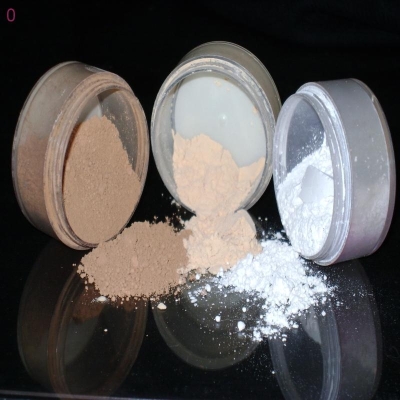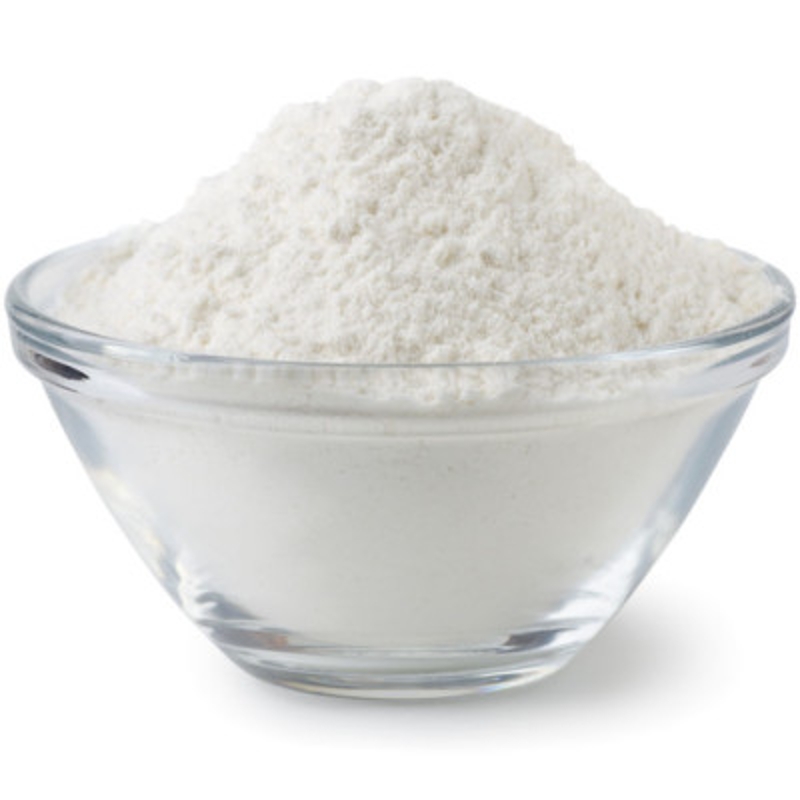How Natural Preservatives Work
-
Last Update: 2021-02-02
-
Source: Internet
-
Author: User
Search more information of high quality chemicals, good prices and reliable suppliers, visit
www.echemi.com
“
No artificial preservatives
"
labels have become almost an essential element of natural foods. But that doesn't mean shorter shelf life is acceptable, but more and more food processors are opting for natural techniques and ingredients to extend it - herbs and spices are beginning to be widely used - and they can also provide a color scent to food.history of natural means to preserve fresh food even predation of growing crops. As
as
12,000 years ago, the Middle East began to have dried and dried meats, fruits and vegetables. Salt has been used as a natural preservative for about the same length of time. The only question is whether these natural substances can keep up with synthetic preservatives to attract consumers.oxidation is the main cause of the change. Oxygen in the air triggers chemical reactions that alter the molecular structure of the substance and cause the breakdown of various components. This is why many preservatives are antioxidants. Many wild and cultivated plants have been studied for their potential antioxidant potential.antioxidants are just a way to extend the shelf life of food.
for most products, microbial contamination is the greatest threat to shelf life. Many natural methods can prevent microbial contamination. These include refrigeration, freezing and reducing moisture activity. The same tools that can be used successfully are restricting nutrition, acidification, gas-conditioning packaging
(MAP)
, fermentation, high pressure, pulsed electric field, nanotechnology, irradiation and the addition of antimicrobial agents. Most of these methods achieve shelf life by society that creates an environment that is not conducive to the growth of bacteria and other microorganisms.the potential impact of these treatments on food is far-reaching. Their damage to fat-soluble
vitamins and essential fatty acids can lead to a significant decline in nutritional value. Lipid oxidation further reduces shelf life by changing the sensory
of the final product - changing the color, texture and taste.Use of new technologies In order to prevent degeneration and prolong shelf life, the food industry often uses synthetic antioxidants, including hydroxyl toluene (
BHT
), hydroxyl fennel ether (
BHA
) and non-food acetate (
PG
). Consumer concerns about the safety of such preservatives have prompted the food industry to look for more natural preservatives. In fact, some big food companies, such as General Mills, recently announced that they were removing
BHT
.between herbs and spices is fairly simple. The leafy part of a plant is usually thought of as herb. All other parts of the plant
-
flowers, grains, seeds, roots, etc
-
considered spices.the role of antioxidants in many herbs and spices is very different. In fact, the breadth of a plant's antioxidant activity is not always fully available, as many different compounds are often involved. In addition, the removal of oxygen free agents that can lead to oxidation and the chelation of minerals, as well as the suppression of enzymes that can catalyz destructive reactions, are key.main source of natural antioxidants is spices, many of which have been used to slow food quality by slowing the lipid oxidation process. Lipid oxidation can occur at any stage during storage and raw material processing. It is a threat that has always existed until the final stage of production and the entire shelf life of the final product.compounds that play a beneficial role in these herbs and spices are mainly phenolic substances. They exist in many forms, including simple phenols, flavonoids, flavlavonoids,flavanols,anthropotin glycosides and flavonoids. Many studies have shown that these compounds have potential physiological effects., many compounds have antibacterial, antiviral and anti-inflammatory properties. Most of them are thought to have cardiovascular protection and can inhibit plateboard aggregation and anticancer
-
by inhibiting the growth of cancer cells (at least outside the body).hundreds of studies have shown the effects of herbs antioxidants on food
-
by measuring their levels of oxidative damage. Rosemary extract has been extensively tested to protect beef, pork, chicken, veal and lamb. Sage extract can be used to protect turkey, muscle, pork and fish.oil has been tested for beef, fish, fish oil and mackerel oil. Utin is a powerful antioxidant that can be used in pork pies. Thyme and ornate essential oils can be added to
sausages in
0.2% of the time. Thyme, rosemary, serfs, mayulan and fennel are also known for their ability to slow the oxidation of salad oils and baked goods.food safety is the most antibacterial compounds are synthesized. However, the food industry is now under intense pressure from health-conscious consumers to look for natural substances that can replace synthetic preservatives. The best natural antimicrobials are mainly spices and their derivatives, such as essential oils. Essential oils generally refer to the part of the oil that confers a scent. They are attractive alternatives because they are classified as
-level
(generally recognized safety
)
class. One disadvantage of their role as antimicrobials is that the corresponding concentrations at optimum results can cause irritating changes in the sensory quality of food. essential oils were originally added to foods to change the taste and aroma. It was later found that many essential oils had antibacterial activity against some bacteria, such as staphylococcus, Lactobacillus and E. coli, as well as certain molds such as meth. growing desire to develop chemically preservative-free, safe, organic and even conventional foods has also led to research into the antibacterial effects of plant derivatives. Examples of important antimicrobial active substances such as essential oils have been shown to have anti-bacterial, antifactoxidal and antioxidant activity. Recent in-body studies have shown that different essential oils are resistant to Lester bacteria. Chinese cinnamon, tea tree and lemongrass essential oils can all be effective against Lester bacteria. an
in-
study published in
The Brazilian Journal of Microbiology
in 2013 revealed two well-known essential oil experiments,
-
thyme and rosemary
-
as preservatives to control listeria in beef. In this experiment, two methods of preserving meat were studied. One is to apply edible gelatin containing thyme or rosemary essential oils to the surface of large pieces of raw meat; In both cases, raw beef was vaccinated against Lester bacteria. the first experiment, the largest antibacterial activity occurred during the
48h storage period using edible film
essential oils. In the fumigation experiment, the greatest bactericidal effect of listeria occurred after
96h
thyme essential oil. In both experiments, thyme and rosemary essential oils were considered to be promising
"
" preservatives for the meat
processing industry. have several mechanisms to explain why essential oils inhibit the growth of microorganisms. Essential oils inhibit enzymes, which are important for the production of metabolic energy in microorganisms. Essential oils can alter the permeability of cell membranes or deform the structure of microorganisms. Other groups destroy proteins that play a key role in the functioning of microbial cells. These mechanisms need further research to confirm. recently, a paper entitled
"Potential application of spice and herb extracts as natural preservatives in cheese
(the potential application of spices and vanilla extracts as natural preservatives
)
was published in
Journal of Medicinal Food
, five spice and herbal extracts with the strongest antibacterial potential, including cinnamon, bovine, cloves, pomegranate skins and grape seeds, were studied for the suppression of Liszt, Staphylococcus aureus, and salmonella in
23
degrees C
cheese. Periodically detect signs of lipid oxidation in cheese. All five plant extracts have been shown to be effective in suppressing food-based pathogenic bacteria in the three cheeses, and the oxidation of lipids decreases with the concentration of all tested microorganisms. of all the extracts studied, cloves had the highest antibacterial and antioxidant activity. The study also has some noteworthy results: the concentration of extracts needed to control microbial growth and oxidation is much higher than the sterilization concentrations of microorganisms in previous non-food systems. It has also been observed that foods with high fat, high protein and low moisture activity often require higher concentrations of natural preservatives. Spice a recent study called
"Evaluat of Antimicrobial Activities of Commercial Herb and Spice Extracts SelectEd Food-Borne"
(Assessment of the ability of commercial herbs and spice extracts to resist food-borne germs) The paper, published in the
Journal of Food Research
, assesses the potential antibacterial effects of
30,
different herbs and spice extracts on "
. extracts from herbs and spices were obtained through different extraction methods, and their antibacterial activity against E. coli, Listeria, Staphylococcus aureus and fluorescent protons was detected using broth dilution. Ethanol and positive hexane extracts from bovine to, cloves, sage, rosemary and celery showed strong antibacterial activity on all test bacteria. , water pickers show low or no antibacterial activity. The method of
/
ethanol extraction is divided into two stages. The first stage is the rupture of the cell membrane and the release of all substances into the solvent. The second stage is the separation of fat-soluble substances from water-soluble substances. Water extraction can only extract the water-soluble part of the substance, while the fat-soluble substance is still in it. The results suggest that the active ingredient is a fat-soluble
-
is essential oils, terpenes, and most phenols. results also reveal some antibacterial mechanism. The cell membrane structure of bacteria is damaged by active spices and herb extracts, resulting in cell content leakage and
loss
ATP. In other words, cells run out of energy due to cell membrane damage. The most effective extracts are orchid-to-lychee, sage, rosemary and celery
/
ethanol extracts. generally speaking, the synergy between extracts is relatively small, although when combined with sage or rosemary, there may be some synergy effect on Listeria or Staphylococcus aureus. The study also showed that some commercial spice extracts have some antibacterial activity against food-sourced bacteria and may therefore be considered as potential antimicrobials to be added to ready-to-eat meals. effective In order to meet consumer demand for naturally preservative foods, many companies are starting to use food preservatives based on a variety of herbal antioxidants. Take advantage of rosemary's natural antioxidant
Kalsec Inc.
developed natural
Herbalox
to maintain the fresh taste and texture of its products, including meat, oils and beverages. Duralox
, also
Kalsec, Kalamazoo, Mich.
specially developed for products that are highly susceptible to oxidation through the binding of antioxidants, including herbal extracts and antioxidant vitamins. This liquid mixture is suitable for beverages and oils. Oils are often rich in
omega-6
and
omega-3
fatty acids.
Nature Seal Inc., based in
Westport
, Connecticut,
has developed a mixture of antioxidants, vitamins and minerals to protect the oxidation of freshly cut fruits and vegetables. Oxidized fruits and vegetables quickly turn brown, which is unacceptable to consumers.
Nature Seal
sodium and sulphate-free products to protect the product from oxidation during slicing and shredding. The collection includes fruit and vegetable specials, as well as one designed to prevent avocado sauce from turning brown. '
's < br
This article is an English version of an article which is originally in the Chinese language on echemi.com and is provided for information purposes only.
This website makes no representation or warranty of any kind, either expressed or implied, as to the accuracy, completeness ownership or reliability of
the article or any translations thereof. If you have any concerns or complaints relating to the article, please send an email, providing a detailed
description of the concern or complaint, to
service@echemi.com. A staff member will contact you within 5 working days. Once verified, infringing content
will be removed immediately.







